Matador Network's Blog, page 887
April 6, 2020
Yosemite video of park full animals
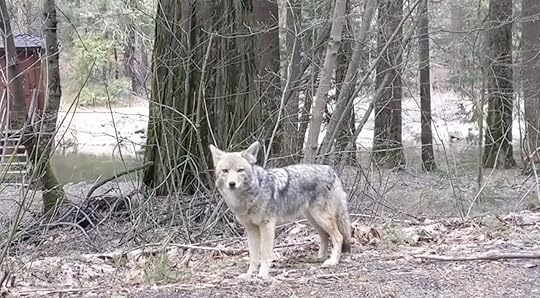
National parks are supposed to be all about nature. The reality in some of the United States’ most popular parks is, unfortunately, can be the complete opposite, especially in the spring and summer. Parking lots are crammed, trails are packed with hikers, and the forests are anything but quiet. The coronavirus pandemic has tragically resulted in the closure of many national parks, meaning we might have to wait a while before enjoying some of the country’s most scenic offerings. It also means, however, that their landscapes have returned to their most natural state.
This video shared by Yosemite National Park shows the park completely deserted by tourists, and instead occupied by its native residents — the wildlife. Young deer wander along the roads unafraid of traffic, coyotes stroll alongside abandoned bike racks, and the sound of tumbling waterfalls is unobstructed by any human chattering.
Of course, the park won’t remain this way forever, nor do we want it to. We’re eager to get back to our national parks and start exploring again. In the meantime, however, it’s nice to see the animals having free reign over their habitat.
Yosemite closed indefinitely on March 20, on the advice of the local health department, along with many of the nation’s other parks. Prior to the closures, many parks even offered reduced entry fees to encourage safe social distancing in an outdoor environment. Health officials, however, have since warned that crowds flocking to parks could be exacerbating the issue, prompting many to close. 

More like this: Seriously, now is not the time to thru-hike
The post Video shows Yosemite National Park full of animals in the absence of humans appeared first on Matador Network.

Matterhorn illuminations COVID-19
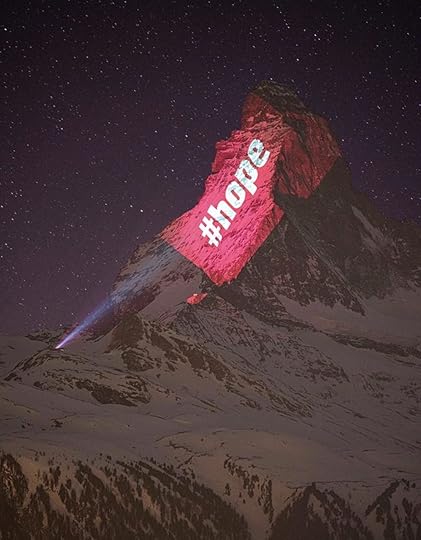
On the border between Switzerland and Italy, two countries severely touched by the coronavirus crisis, the 14,691-foot-tall Matterhorn mountain stands as a giant canvas for messages of hope and solidarity for all those who live in the region.
Since the end of March, the famous mountain peak has been illuminated with the work of light artist Gerry Hofstetter. The words #stayhome and #hope are being projected onto the side of the mountain, as well as images of an Italian flag, heart, a Swiss cross, and other symbols of solidarity.
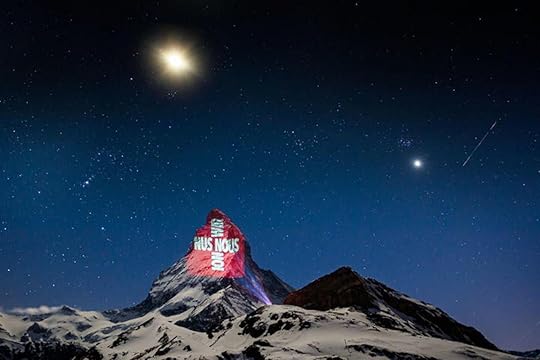
Light Art by Gerry Hofstetter/Photo: Michael Kessler via Zermatt Matterhorn
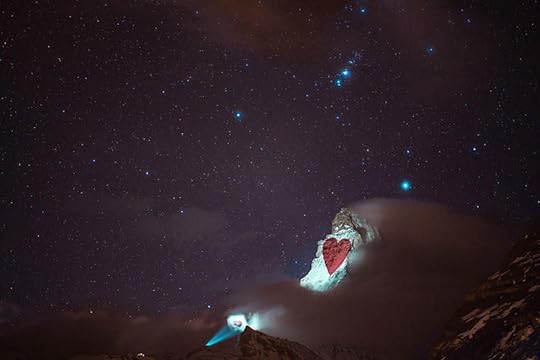
Light Art by Gerry Hofstetter/Photo: Gabriel Perren via Zermatt Matterhorn
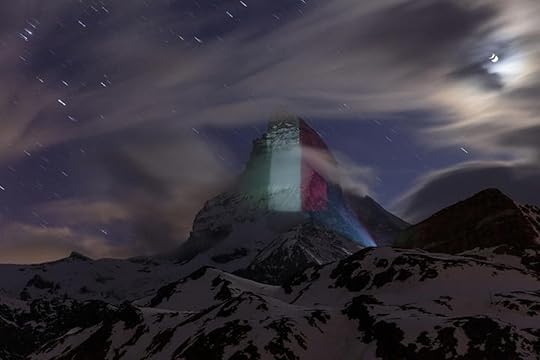
Light Art by Gerry Hofstetter/Photo: Frank Schwarzbach via Zermatt Matterhorn
According to Zermatt’s official website, “With this light projection, Zermatt wants to give people a sign of hope and solidarity in these difficult times. The village shows solidarity with all the people who are currently suffering and is grateful to all those who are helping to overcome the crisis. Stay at home — you can follow the spectacle live via webcams.”
The lights are visible daily, and are most safely viewed via one of the mountain’s many webcams. 

More like this: The 7 most epic Matterhorn experiences
The post Messages of hope and solidarity are being projected onto the iconic Matterhorn appeared first on Matador Network.

RVs 4 MDs Facebook group

For hospital workers, leaving a shift in the emergency room and ICU doesn’t mean the day’s stresses are at an end. Many workers are going home and worrying about infecting their healthy family members, or paying for hotel rooms at great expense. A Facebook group called RVs 4 MDs is trying to make life easier for them by matching unused RVs with hospital workers, so they can self-isolate safely.
The Facebook group, which was created on March 24, already has almost 21,000 members. It’s proven effective in matching RV owners with idle vehicles to hospital workers in dire need of a space to social distance. It began when Emily Phillips, a mom of three, posted on her own Facebook page asking if anyone had an RV for her husband, an ER doctor in the Dallas-Fort Worth area. A woman named Holly Haggard offered her RV, and now the family is resting much easier at night.
“Before the RV,” she said to CNN, “I was a nervous wreck. Every time my husband walked in the door or put his hand on something, I thought we were going to get (Covid-19), including my baby. But now that he’s in that RV, I’m back to my life, focused on my full-time job and my kids, and it’s completely changed our situation.”
Now, the two women are business partners aiming to pair up as many RV owners and healthcare workers as possible.
Mark Quale, an ER physician in Burlington, North Carolina, is also taking advantage of the program, and couldn’t be more grateful. “(RVs 4 MDs) demonstrates that there is so much more to fighting the coronavirus than what happens at the hospital,” he said. “There are layers upon layers of people fighting this in different ways. The reason I’m able to fight this right now is because of my wife [now a volunteer for the Facebook group] and the work that these people are doing so we can focus on the medical portion and not have to worry about the rest.”
If you have an RV that’s sitting idle and would like to donate it to a medical worker in need, simply visit the Facebook page. 

More like this: How you can help hospitality workers affected by COVID-19
The post This Facebook group is helping medical workers self-isolate by matching them with unused RVs appeared first on Matador Network.

Ireland PM returning to medicine

In the fight against coronavirus, everyone must do their part. And that includes people with seemingly much bigger responsibilities on their plate. Leo Varadkar, Ireland’s prime minister, has just rejoined Ireland’s medical register and will soon begin working directly with patients. Varadkar graduated from Trinity College Dublin’s School of Medicine in 2003, and worked as a physician for seven years before pursuing politics.
Varadkar’s announcement is the most high profile example of Ireland’s initiative to recruit health professionals who aren’t working in the health sector. The campaign, spearheaded by health minister Simon Harris, is designed to grow the number of healthcare professionals dealing with the coronavirus pandemic, and alleviate some of the pressure on career nurses and doctors. Over 50,000 people have already applied, according to The Irish Times.
While Varadkar won’t be in the emergency room, he will be helping with phone assessments, diagnosing potential patients over the phone to determine whether or not they have COVID-19. Phone consultations are important, as they can prevent the spread of the virus and keep hospitals from becoming overloaded. 

More like this: How you can help hospitality workers affected by COVID-19
The post Ireland’s prime minister is returning to medicine amid the coronavirus pandemic appeared first on Matador Network.

April 3, 2020
Travel in the post-COVID-19 era
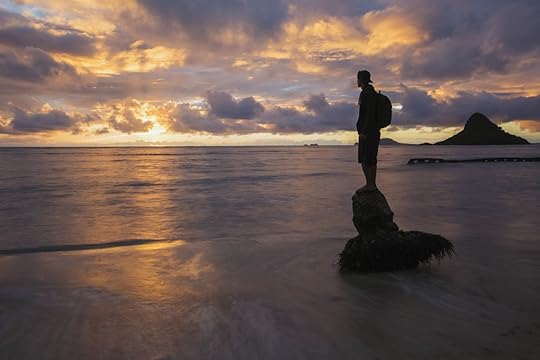
In this op-ed, Luis Vargas, CEO and founder of the tour company Modern Adventure, shares his thoughts on the outlook of travel in the coming months after several weeks of coronavirus wreaking havoc on the industry and the world at large — and why he’s certain the power of the traveler mindset will endure.
As the days turn into weeks, and it’s clear that things are not going to be “back to normal” by summer, I have found my mindset moving from light to dark and back again. I feel sad, angry, frustrated, and flabbergasted. I also feel grateful, humble, curious, optimistic, and brave.
Travel, for me, is about the context and empathy that it seeds. The new lenses we look through to see ourselves and the world around us. The understanding of the interconnectedness of all things. The narrative arc of the human story, of how our hopes, desires, and dreams are so much more similar than different.
I remember many years ago returning home after an extended period in rural Central America and marveling with new eyes at the wonder of fresh clean water flowing from my taps. That I could, instantly, get clean, hot or cold water at any time of the day. The gratitude I felt was a gift of awareness and humility that washed over me and my character.
This shared global experience is paradoxically a travel experience by definition. We are all, collectively, in a new place, with new norms, and a new culture forming around us. We are all active participants in the narrative, and we reinforce and build this new culture, for good or bad, by what we say and do, and equally by what we don’t.
I suggest it’s a time for offense rather than defense. It’s time to explore this new place we are all in. To find the connective tissue between us. It’s a time to collaborate, dream, reimagine, and commit.
I’m a believer in the forcing function. Often, we do hard things when we have to. When our backs are against the wall… Well, I wouldn’t bet against us.
May we never take for granted:
The freedom to explore the world
A warm embrace
Drinks with a friend
Celebrations
Sweaty bodies bouncing on the dance floor
The bustle of a busy market
The roar of a crowd
While it’s clear that we have a ways to go, there is much to be grateful for in this moment and in the anticipation of what delights await us once again, around the bend. 

More like this: Seriously, now is not the time to thru-hike
The post Things will not be back to normal by summer appeared first on Matador Network.

Mike Posner on walking across the US
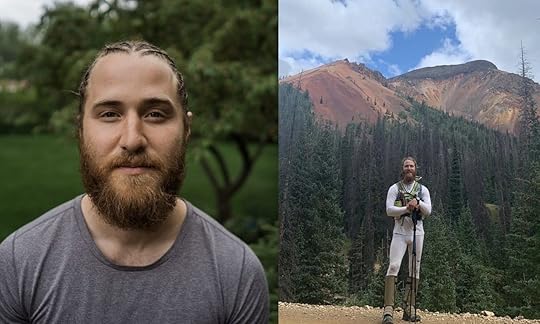
Mike Posner never thought he would traverse a continent on foot, summit mountain peaks, or complete an arduous Wim Hof retreat. “I’m just a singer who already blew his shot,” Posner lamented in his 2016 hit, “I Took a Pill in Ibiza.” Singing about the possibility of disappearing into obscurity, ironically, helped him climb the ladder of musical fame. It would later win him the 2017 Grammy award for “Song of the Year,” a milestone achievement after writing hits for other artists like Justin Bieber and Maroon 5. He was raking in touring dollars and industry attention across genres.
But then life changed completely. Just as his biggest song blew up, he got a call that his father had brain cancer. He broke up with his girlfriend. His father passed in January of 2017. His good friend Avicii, who he sang about in the second line of “Ibiza,” died suddenly in 2018. Facing his own mortality and rocked by change and loss, he began a journey of personal growth and pursued his transformation through books, meditation, seminars, and more.
Then Posner embarked on his biggest adventure — walking 2,851 miles across America. He spoke with Matador Network over the phone about the experience and how his life is forever changed because of it.
Turning an idea into action
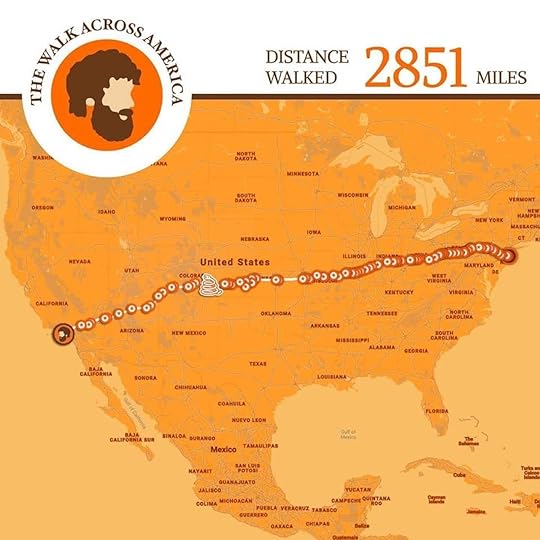
Photo: Mike Posner/Facebook
Posner first had the idea to walk across America after he overheard someone speaking about it in a store some years ago. He was fascinated, but he held onto the idea for years and never seemed to get around to it. “A lot of us put things off, myself included,” Posner says. “We have a list of things we’re gonna get to when we’re done doing what we think we have to do. And I just realized, my dad died, my buddy Avicii died, and… I could very well die and never get to that list. And if I wanna walk across America, I gotta do it now, or it’s never gonna happen.”
Posner first announced the plan on social media as the journey “that will take me most of my 31st year” and was bolstered by incredibly supportive fans and friends. He started at the Atlantic Ocean in Asbury Park, New Jersey, on April 15, 2019, and arrived in Los Angeles on October 18, the salt from the Pacific Ocean mixing with his salty tears of joy at Venice Beach. Over the course of six months, he had turned himself into a modern-day Forrest Gump, growing a long beard and attracting media attention.
At times, he thought he wouldn’t make it. The trip was exhausting, his feet were blistered and sore, and his muscles regularly quivered with fatigue. He walked 20 to 30 miles each day. And then in August, he was bitten by a rattlesnake and nearly died; it took almost a month to recover in the hospital. The photos he shared on Instagram — bedridden with a swollen leg, hobbling forward using a walker, and looking like a beleaguered mountain man — were worrisome for the thousands of followers watching him go through the experience. But he triumphed. Three weeks later, he returned to the exact spot where he was bitten and pressed onward.
View this post on Instagram
A post shared by Mike Posner (@mikeposner) on Aug 10, 2019 at 6:41am PDT
Since the walk, Posner has accomplished further outdoor feats and continued his meditation practice. The person he was at the beginning of his career in 2009, when his top-10 hit “Cooler Than Me” came out, is now a memory as distant as Venice Beach is from Asbury Park. He’s not trying to be cool anymore — he says he’s just trying to be proud of himself. Posner shared some key lessons learned on his epic journey, which took him both across the highways of his homeland and inward toward greater self-awareness.
The importance of honoring your word
The cross-country walk wasn’t the first step in Posner’s quest for meaning and insight. Prior to the journey, he attended various retreats, practiced meditation, and read about mindfulness. Amanda Palmer’s Art of Asking changed the way he thought about being an artist, and he says he read Eckhart Tolle’s acclaimed Power of Now about seven times. One of the most important things he learned at one of these transformative seminars, called the Landmark Forum in Los Angeles, was the importance of having integrity, toward yourself and others.
“It felt like my whole life was five minutes late. And I didn’t always live up to my word,” Posner says. “So if I made plans, like to go to dinner at 6:00 PM, I might show up at 6:05, 6:07. And somebody reading this might say, ‘What’s the big deal with that?’ Well, the big deal with that [is], later, if you have a big goal for yourself, like ‘I’m gonna walk across America,’ you don’t even really believe yourself, because you can’t show up to dinner on time. You can’t even do that.”
Committing to and following through on his promise to walk cross-country has only increased the importance for integrity for Posner in other aspects of his life. “If I say I’m gonna be someplace at 12:30, I’ll be there at 12:30 or 12:25,” Posner says. He adds that having “500 percent more accountability and integrity” has had “unlimited reverberations in my relationships with my family, my friends, my loved ones — and with myself most importantly.”
Fear means you should forge ahead
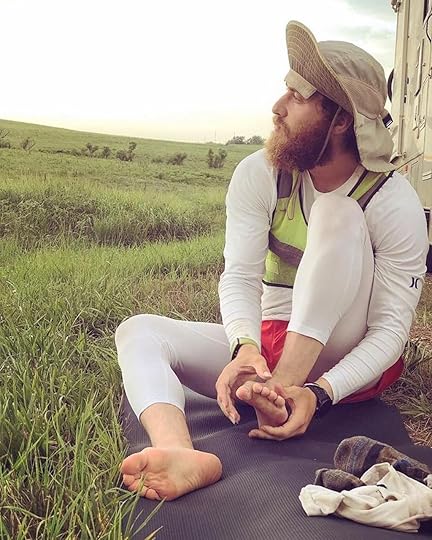
Photo: Mike Posner/Facebook
Walking across the entire country is something only a handful of people have ever done. I asked the obvious question: Was he nervous?
“Yeah, of course I was nervous — I didn’t know if I could do it. I thought I might fail, I thought I might not make it.”
Plenty of people who start big feats like this quit in the middle (only about 25 percent of thru-hikers who start the Appalachian Trail actually finish it, according to the Appalachian Trail Conservancy), and his mother had told him he could always come home. “But I think that anxiety or fear is a sign that I’m on the right path,” he says. “If I’m living my life and I’m never nervous, I’m always in my comfort zone, I’m probably living a pretty small life. If I get nervous about stuff, I know it’s big to me, and it matters to me, and I’m walking out from my comfort zone, which is where growth and life reside.”
Posner also had to confront the possibility of letting others down, like telling his band that they wouldn’t be touring that year, that money would move differently (if at all) to some members of his team, or disappointing his fans following the journey on social media. But he believes that fear can be a teacher. In other words, if you’re scared to take that trip or take on that big goal, it’s a clue that you might be looking in the right direction.
You don’t need to have experience to get started.
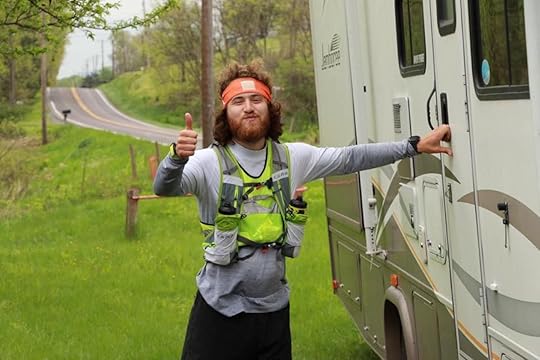
Photo: Mike Posner/Facebook
I asked Posner if he had ever walked or hiked any far distances before. “I don’t think anything can really prepare you for doing it besides doing it,” he says. Though he had an athletic past in school under his belt and “had done some backpacking and stuff when [he] was a kid,” Posner was not an advanced trekker or power walker.
He referenced other popular trails like the Appalachian Trail or the Continental Divide Trail, but walking across America is very different. “This is not ‘nature porn,”’ he says bluntly. “This is not connecting deeply and only seeing the trees for days and days. This is you high-fiving the sides of semi-trucks that careen down on you at 80 miles per hour. And there are beautiful times in the wilderness, too, but I don’t think anything can really prepare you for that.”
He had support. Fans along the way brought him food and kept him company, and an assistant often stayed ahead in an RV where he could sleep and eat each night, before getting up at 4:00 AM each morning to begin again. At one point, he admits he was shaken when he met another man running about 40 miles per day with no headphones and no team — just his physical ability and his own thoughts.
Your reasons for not doing something are usually “bullshit”
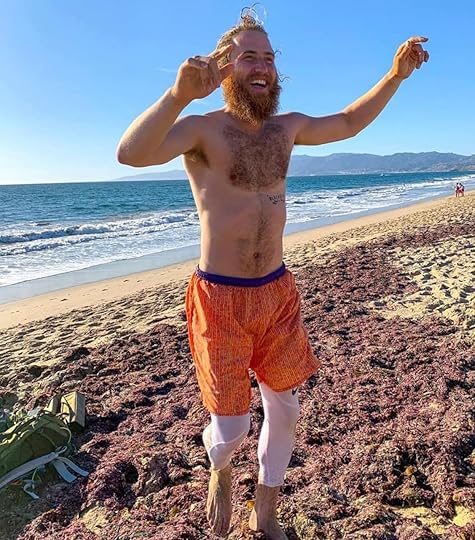
Photo: Mike Posner/Facebook
When Posner began his walk, people would come up to him and express great admiration while lamenting that there was no way they could do something like that.
“People would come up to me a lot and say, ‘This is so inspiring. I wanna do something like that one day’… And just like I was, I could see they were trapped behind their reasons. They always had a reason why they can’t do it now.”
He gives specific, sobering examples: “I would meet like an older person, and they’d say, ‘Man, I’m just too old to do something like that now’… And then I would meet young people, like 19 or 20, and they would say, ‘Man, I’m just too young to do it now, I really gotta get my career started, this and that.’” Others cited lack of time, money, or access to the resources afforded Posner by his fame as obstacles.
Yet Posner wasn’t the only one trekking across the country. He learned that “there are 10 to 15 people walking across America every year, almost none of them are well-known, almost none of them spend very much money, and they range across ages, some of them are 19, 20, and some of them are like 70. Doris Haddock walked across America when she was 90.”
For Posner, pushing through excuses is a critical, constant practice. “It’s really not about walking across America; it’s just about whatever that thing is that you know you’re supposed to be doing that’s important to you, that on the other side of having completed you’ll actually be proud of yourself, and for some reason you let your mind create reasons why [you] can’t do it now.”
In short, “Our reasons are 99 percent complete bullshit. They’re not really reasons; they’re excuses.”
Set goals you don’t think you can achieve, and push through
As he documented the journey on social media, fans could see the walk start to take its toll. After passing through Kansas, Posner released a video sharing how much pain he was in each day, apologizing to his fans for not authentically including such details amidst his uplifting shares.
View this post on Instagram
A post shared by Mike Posner (@mikeposner) on Jul 21, 2019 at 5:57am PDT
Through his social channels, Posner told people in more ways than one that he wasn’t walking to prove anything or show anything — he was walking to discover something new about himself and see who he might become. But even with this mantra, he wasn’t sure how he would get through the challenges of the experience when he initially declared the goal. “Some days I don’t wanna keep going. I decide to keep going. Keep going,” he told Instagram.
Even though hardship may be inevitable, Posner says he wants to see more people take on bigger goals and go for things that push them into similarly unknown territory. “Set a goal for yourself that the current version of yourself is unable to achieve,” he says. “And then go become the person that’s able to achieve it.”
“I think people underestimate the value of doing something very difficult,” he says, “and the feeling of peace and confidence that’s on the other side of that suffering.”
I ask him a final time what else he learned on his walk. “That I’m unstoppable,” he says without hesitation. He had thoroughly surprised himself after discovering an untapped well of power and strength on the journey.
“I had this inkling before I left that there’s a little bit more in me. But when I was on the walk, I found out I’m wrong, there’s not a little bit more — there’s a lot more in me. I wanted to become somebody I was proud of. And really, after I got bit by a snake and then after I came back, and then I went up and over the Rocky Mountains and got to the other side, [I thought] ‘Man, like, you’ve been playing so small for the last 30 years.’ I can do anything.”
He even worked on music the entire time, keeping his promise that he would release a song every time he crossed a new state, and releasing his “Keep Going” album at the end of the journey. He immortalized the story of his journey in the “Live Before I Die” music video.
In our short interview, he added a hopeful expression for anyone thinking of leaping into a goal, a trip, or any other feat they’re a little bit afraid of. He hopes that others can similarly understand that no matter how impossible or absurd your aspirations might seem to the person you are right now, there’s more in you than you think — and you don’t know yet who you’ll be if you take it on, whatever “it” is for you.
“I hope that my walk can be a symbol for myself and for other people that the time is now,” Posner says. “Whatever reasons you think you have you can’t do it, it’s probably just your fear wearing a mask.” 

More like this: What it’s really like to go to on a Wim Hof Method retreat
The post Singer Mike Posner shares life lessons from his walk across America appeared first on Matador Network.

Pickled, cured, and fermented foods

It’s easy to take refrigeration for granted. But far before these nifty gadgets arrived in our kitchens, humans had to be a little more creative when it came to keeping their food edible for longer. Averse to wasting nutrient-rich ingredients, our ancestors turned to pickling, fermenting, drying, and curing our food to avoid starvation — and many dishes created using these techniques remain centerpieces of cuisines across the globe today. Korean people have been pickling cabbage to make kimchi for 4,000 years. The Vikings dried cod on wooden racks to make sure they had meals on hand for long ocean voyages. The ancient Romans sold meat cured with salt in markets as early as the second century BCE. And those are just the dishes you’ve probably tried yourself, or at least heard about before.
Countries throughout Asia, West Africa, the Meditteranean, the Middle East, Europe, and Scandinavia are still preserving foods using ancient techniques. Here are 12 fermented, dried, pickled, and cured dishes you may not have tasted.
Fermentation

Photo: Hanasaki/Shutterstock
Fermentation, the process by which bacteria convert sugar or starch into acid or alcohol, is responsible for so much more than wine and beer. This pungent process is behind a whole host of funky foods and can be applied to more than liquid — dairy, soybeans, even root vegetables can be fermented.
Boza: This fermented Turkish drink has been around for at least 8,000 years. Though it can be made from any grain, it’s traditionally prepared by boiling millet with water, sugar, and a starter yeast and is then left to ferment for at least 24 hours. The resulting tangy, smoothie-like drink is considered a digestive aid, similar to kefir.
Nattō: Often described as slimy, gooey, and sticky, nattō is a Japanese dish made from fermented soybeans. Traditionally, nattō is produced by wrapping boiled soybeans in rice straw, the surface of which is populated by the bacteria Bacillus subtilis. While the smell is pungent (think funky cheese), the flavor is earthy. Nattō is typically served at breakfast over a bed of rice and topped with scallions or a raw egg. Though the exact origins of nattō are lost to history, legend says that it was accidentally discovered when samurais, in a hurry to retreat from battle, left cooked soybeans wrapped in straw in sacks carried by their horses. The body heat from animals apparently aided in the fermentation process.
Garri: Derived from the fermented mash of the cassava root, garri can take the form of a dough, grain, or a flour. The cassava is grated and combined with water, the starch is squeezed out, and then the remaining pulp is left to naturally ferment for three to seven days, a process which lowers the cyanide content in the cassava making it safe for consumption. Once the fermented pulp has been dried, it’s usually fried in palm oil. Garri is popular in Nigeria, where the garri grain is soaked in milk and eaten like cereal or shaped into a firm ball to create the starchy side dish eba, and it’s also popular in Ghana and Cameroon.
Drying
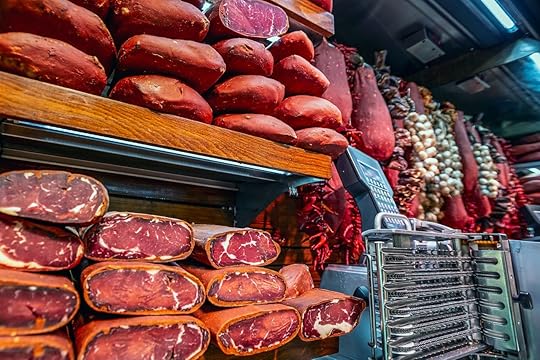
Photo: leshiy985/Shutterstock
Drying is perhaps one of the simplest methods of food preservation. The process involves dehydrating foods, especially meat and fish, until there isn’t enough moisture left to invite the growth of bacteria that spoils food.
Pastirma: Dating back to the Ottoman empire, pastirma (sometimes called Turkish pastrami) is an air-dried meat also popular in Armenia, Greece, and Egypt. The name comes from the Turkish phrase meaning “being pressed” because, according to legend, Turkish soldiers kept slabs of spiced beef under their saddles. Made primarily from beef or camel, the meat is cut into strips, covered in salt (making it also a cured meat), dried out by the wind, seasoned with paprika and garlic, then dried again until it “has the consistency of wood,” according to Patric Leigh Fermor, a British historian who studies Greek culture.
Daing: This sun-baked fish from the Philippines is split open, salted, and dried in the open air, then fried until crisp. Any fish can be prepared as daing, but the dried sardine version of the dish is called tuyo. Daing is traditionally served at breakfast, alongside fried rice or egg and a dipping sauce, typically vinegar, while crispy tuyo are typically served as a light snack.
Lutefisk: A product of Norway, Sweden, and Finland that’s traditionally enjoyed during the holidays, this Nordic is fish incorporates some ingredients the uninitiated might not have realized were edible. Lutefisk literally means “lye fish.” Cod is dried to the point that it becomes leathery, and then it’s soaked in lye (a chemical you might recognize from the back of a bottle of Draino). The cod takes on a gelatinous texture, is notoriously stinky, and is even considered a near-toxic substance in Wisconsin. According to the Smithsonian, Scandinavians have been eating lutefisk since at least 1555, but it’s recently become more popular in the United States than in Nordic countries.
Pickling

Photo: StockImageFactory.com/Shutterstock
This method of food preservation involves soaking foods, typically vegetables and fruits though meat and eggs can be pickled too, in either vinegar or a salty brine. Pickled foods are often used as a garnish or condiment to give the main dish a tangy, sour kick.
Achaar: In India, achaar refers to any mixture of fruit and vegetables that have been pickled — typically limes, lemons, ginger, and mangoes seasoned with one key ingredient: chili pepper. In the north of India, mustard oil is added to the seasoning mixture while in the southern regions they use sesame oil. Fenugreek and coriander seeds round out the spice blend. Achaar is considered a condiment, beloved for its spicy and tangy flavors. According to food historian KT Achaya, pickles have been considered a delicacy in India since at least 1170 AD.
Cuerito: Popular in Mexico and Venezuela, cueritos are pork skins pickled in vinegar. Cueritos are what’s called in Mexico an antojito (literally “little craving”), a snack food typically sold at street food stalls or markets. The leathery rinds turn chewy and gelatinous, but to offset the perhaps off-putting texture, cueritos are often served with a lime, cabbage, and cucumber slaw spiced with chili sauce. Cueritos can also be served as a garnish on a cemita, tacos, or tostadas.
Rollmops: This German version of an hors d’oeuvre is a fillet of pickled herring wrapped around a savory filling, like a gherkin or an olive, held together by a toothpick. The name is a reference to its rolled shape, which takes on the appearance of jowls; mops is the German name for a pug dog. Rollmops are a crucial element in the German katerfrühstück, or “hangover breakfast,” because the salty fish supposedly restore electrolytes. Pickled, dried, and smoked fish have been popular in countries near the Baltic and North Seas for thousands of years, but this particular pub snack exploded in popularity in the 19th century.
Curing

Photo: nurten erdal/Shutterstock
Curing, which can also involve a period of drying or smoking, is a general term used to identify any process that prevents the spoiling of meat. Salt is essential to the curing process as it draws out moisture from meat. Bacon is perhaps the most famous variety of salt-cured meat, but sausages, like salami, are also commonly cured.
Sujuk: Spiced with cumin, salt, paprika, garlic, and red pepper, this sausage is known for its high fat content. Though the Turkish were the first to make sujuk around 1000 BCE, it’s since spread to the Balkans and the Middle East, and today it’s popular in countries like Lebanon, Bulgaria, and Kyrgyzstan. The meat is cured for at least six weeks, at which point it acquires a texture similar to salami and both a tangy and spicy flavor.
Hákarl: The Vikings were an industrious bunch, famous for supplementing their seafaring lifestyle with stockfish — cod dried on massive wooden racks. These iron-stomached warriors are responsible for the invention of hákarl, the cured meat of a Greenland shark. Typically, the flesh of these long-lived sea creatures is toxic, but the Vikings buried the dead sharks under mounds of dirt and rocks, aging the meat until the poison dissipated. The result is pungent — to put it lightly. The smell of hákarl is sometimes compared to urine while the taste falls closer to a funky blue cheese.
Mettwurst: This uncooked sausage (rohwurst) first appeared in German cuisine 500 years ago. The ground pork and beef sausage is first cured, then either smoked or air dried. The sausage is seasoned with garlic, pepper, and caraway and sometimes rum or Cognac. Mettwurst is typically only smoked for a short period of time, leaving it soft enough to spread on toast. Sausage is an integral part of the German diet; the country boasts 1,500 different varieties of wurst. 

More like this: How to preserve, pickle, and dry foods in your new free time
The post 12 pickled, cured, and fermented foods from around the world appeared first on Matador Network.

110,000 restaurant closures expected
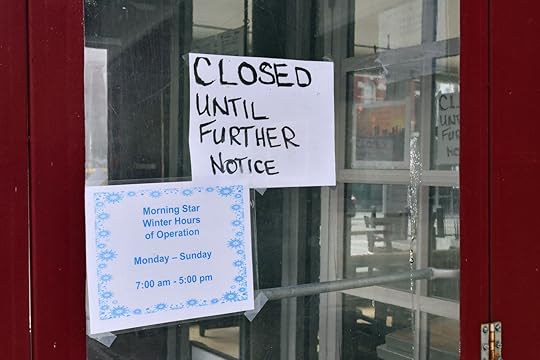
The dining scene across the United States is going to be drastically different when life settles after the COVID-19 pandemic. According to a survey by the National Restaurant Association (NRA), 3 percent of restaurant operators have permanently closed, 44 percent have temporarily closed, and 11 percent say they expect to permanently close within 30 days.
The survey polled more than 5,000 restaurant owners and operators, and questions were related to the period between March 1 and March 22. Sales decreased 47 percent across the board, and around 70 percent of operators laid off employees or reduced hours. The effects of the virus haven’t yet hit the country equally, with the majority of early shutdowns occurring in urban areas like New York City and Seattle. Now, with 90 percent of Americans under stay-at-home orders, the outlook for the restaurant industry is only expected to get worse: Around half of the restaurant owners surveyed by the NRA expect to have more layoffs in the next month.
“This is uncharted territory,” Hudson Riehle, the NRA’s senior vice president of research, said in a statement about the survey. “The industry has never experienced anything like this before.”
The government response hasn’t helped ease the stress. President Donald Trump was asked about the NRA’s projections on permanent closures and responded that “they’ll all come back in one form or another,” but that it “might be a different restaurant.” He quickly reiterated that “it may not be the same restaurant, it may not be the same ownership, but they’ll all be back.”
Restaurants operate on thin margins. In restaurant-saturated, food-centric cities, the industry was already a tough one — only around 40 percent of restaurants survived the first year of business before the pandemic. Closing for a few weeks, let alone a few months, means not being able to make rent or pay staff.
Restaurants are seeking a number of methods to stay open, according to Eater. The industry is experimenting with rent deferment, paying with the security deposit, and rent forgiveness, as businesses wait to see if they’re included in a federal bailout bill.
Some government agencies and businesses have tried to help. The IRS and Department of Labor rolled out refundable tax credits to help ease the costs of paying employee sick leave — though that doesn’t help much for restaurants forced to shut down or switch to delivery. The law firm Gauthier Murphy & Houghtaling is working with restaurant industry leaders to secure business interruption insurance payments. It’s impossible, however, to help every impacted restaurant. The NRA survey estimates that in just the first 22 days of March, the industry lost more than 3 million jobs and some $25 billion in sales.
For ways you can help the hospitality industry, check out our guide to organizations accepting donations.

More like this: How you can help hospitality workers affected by COVID-19
The post 110,000 restaurants expected to permanently close in the United States appeared first on Matador Network.

Astronauts' tips for self-isolation
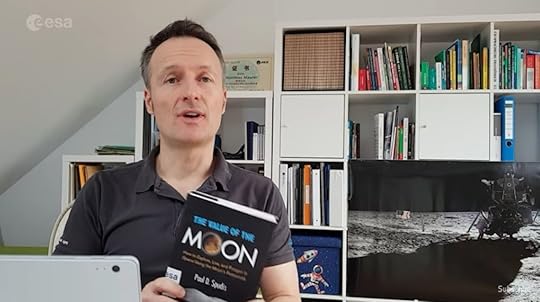
When it comes to surviving and thriving in self-confinement, astronauts are serious pros.
Becoming trained and certified to work in outer space takes years, and a good chunk of that time is spent learning the art of living in close quarters. During a typical six-month mission, there are plenty of chances to go stir-crazy without personal space — but also co-worker privacy, hot showers, normal toilets, and, well, gravity.
“Being prepared for isolation is part of our training,” says Matthias Maurer, a German astronaut currently helping to develop the European Space Agency (ESA)’s future manned missions to the moon. “Every two weeks [in space] we have an obligatory phone call with the psychologist as prevention.”
Maurer recently took part in a livestream hosted by the ESA’s YouTube channel. Astronauts from around the world appeared via Skype, answered audience questions, and gave personal tips from their time in space, proving to be the isolation gurus we need right now.
According to Maurer, who is currently preparing to receive his first space mission sometime between 2021 and 2024, the ongoing coronavirus pandemic is the real-life training drill he never would’ve expected in a million lightyears.
Despite this, Maurer offered those of us struggling some hope. Astronauts are taught to imagine the worst-case scenario and make decisions based on preventing it. While in space, the right call might not be clear, but when it comes to coronavirus, we all know what we need to do to get through this.
“[Imaging the worst-case scenario gives] you the feeling not of losing control but that you have some control over the situation,” he said. “Now the situation is similar. We have a very effective means of limiting this illness — that is that we stay at home.”
During the livestream, Maurer’s forerunners also shared their wisdom. Here’s some of the astronauts’ best advice on enduring self-quarantine.”
Editor’s note: The livestream was conducted in German and translated for this article by a native speaker. Some translations, however, may be imperfect.
1. Live by your routine.
Social distancing is a long game, so creating a regular daily grind is key to maintaining your mental health, claim the experts.
“Just having some control and some certainty over how your day is going to play out is a huge psychological boost,” said NASA astronaut Nick Hague.
Thomas Reiter, the first German astronaut to perform a spacewalk, recalled a “very tight daily routine” aboard the International Space Station (ISS).
“It’s important to follow a conscious routine in such a situation,” said Reiter, who has retired from missions and now works as an ESA adviser. “Not just living day to day, but keeping a conscious sequence to pull through the day, and keeping that routine all week.”
For example, Reiter’s crew would always choose its favorite foods from the station’s container for dinner on Fridays and Saturdays. Eating isn’t necessarily something astronauts look forward to in space (only specific non-perishable foods are allowed, and certainly nothing like bread and salt, which can get messy in microgravity), but at least this way weekend mealtimes became exciting.
Reiter’s comments got laughs from his fellow astronauts, who had done the same thing with their crews in space. Maurer also agreed with his predecessor that routines help to establish motivation.
“Every day must have a plan. You can’t start the day without knowing what you’re going to do,” he explained. “You have to have a project, something that fulfills you and makes you think, ‘Today I’m doing this, and if I achieve it will make [me] content and happy.’”
2. Work-life balance is crucial.
On the ISS, each astronaut has a personal living quarter about the size of a closet, according to Hague. Closing the door every once in a while to take some alone time, whether watching a movie or reading, was essential to his sanity, he said.
Now self-quarantining with his wife and two sons, he practices that same principle of “me time” in the limited orbit of their family home.
“In some sense, it feels kind of like I’m living on the station again,” he joked, adding that maintaining a bit of “personal space [and] personal time is super important”.
“[I liked to] just kind of escape all the hustle and bustle and everything else that was going on … collect myself, my thoughts, and being able to escape,” he explained.
The ESA’s Alexander Gerst, the ISS’s first German commander, said he respected an “artificial boundary” between work and private life during his last mission in 2018.
“We had a conference with the landing station at morning and night, and we said everything in between is work time, and everything after is free time,” said Gerst from his home office. “You have to keep to that; it was also important for me to do that as commander too.”
There would always be data to collect and experiments to conduct, but powering through could lead to burnout, Gerst explained.
3. Get on video chat.
The astronauts were asked about missing loved ones during their missions and how they coped. Apparently, the ISS, orbiting 400 kilometers above Earth, is equipped for video chats and phone calls. So the astronauts recommended that people learn to depend on online resources like Skype, FaceTime, and Zoom during this difficult time.
Reiter said he talked to his family face-to-face every weekend from the ISS. Additionally, they were allowed to make phone calls as often as possible. He would do so “whenever there was a couple of minutes’ time in between,” offering the takeaway to not hesitate but just reach out when feeling lonely.
Meanwhile, Hague regularly did crossword puzzles with his boys from space — an activity that seemed trivial but offered quality time between father and sons.
“Just being able to connect that way was such a huge emotional boost,” he said. “It helped me prepare for the next day. Technology has advanced so much that we’re able to reach out and connect.”
4. Be mindful of others.
The astronauts urged people against panic-buying for the sake of others getting the supplies they needed too.
But more importantly, they zoned in on the importance of open communication with co-inhabitants — which in their case, were also their co-workers.
“You work together as a crew, you have to think of the others … Each of us has a quirk which we are comfortable with but which can annoy others,” said Maurer, telling a story about how his affinity for bananas annoyed a colleague who couldn’t stand the smell of them.
They had a discussion, created some ground rules, and were able to avoid future troubles.
Hague, who jokes that his current “full-time job” is not astronautical engineering but home-schooling his sons during home quarantine, said that the best advice he could give from his time in space was learning the value of teamwork.
Maintaining the ISS and working towards the common goal of getting back down to Earth was a team effort, he said. So it was important to help fellow crew members. Social distancing is the same idea — and, in many parts of the world, it’s working to slow the spread of coronavirus.
As Hague said, it’s us, “taking care of each other.” 

More like this: Pro tips for working from home, from the Matador staff who do it year-round
The post These astronauts gave their pro tips for surviving social isolation appeared first on Matador Network.

Live streaming flower blooms

Despite everything that’s going on, nature takes its course and flowers are blooming around the world. Because going out in busy areas isn’t possible right now, it’s tough to experience spring in all its glory. Thankfully, several gardens and public spaces are streaming their blooms online. In real time, you can watch cherry blossoms, tulips, orchids, and other flowers blossoming and signaling the arrival of spring.
Among these blooming events are the New York Botanical Garden’s “Orchid Show.” Every spring the garden turns its Enid A. Haupt Conservatory into a greenhouse for blooming orchids. This year, however, “The Orchid Show: Jeff Leatham’s Kaleidoscope” will be a virtual event that you can take in from home.
The National Cherry Blossom Festival in Washington, DC, is one of the country’s best-known spring events, and this year you can attend via the Bloom Cam and virtual festival. The live feed will allow you to see the city’s iconic 3,800 cherry trees around the Tidal Basin, without having to worry about socially distancing yourself from thousands of other people.
In the Netherlands, the tulip industry has taken a massive hit due to the coronavirus crisis, but that doesn’t mean the tulips themselves are hiding underground. At the Keukenhof Gardens, one of the largest flower gardens in the world, the crowds won’t be descending upon the tulip fields this spring — but that’s okay. The garden is releasing a series of videos, including a tour with the garden’s managing director, to keep you connected to your favorite Dutch flower.
Other virtual flower experiences include a live stream of the Antelope Valley California Poppy Reserve and a virtual tour of the Royal Horticultural Society Chelsea Flower Show in London. 

More like this: The 7 most fascinating flowers around the world you need to see in person
The post Check out spring’s spectacular flower blooms live from the safety of your home appeared first on Matador Network.

Matador Network's Blog
- Matador Network's profile
- 6 followers



